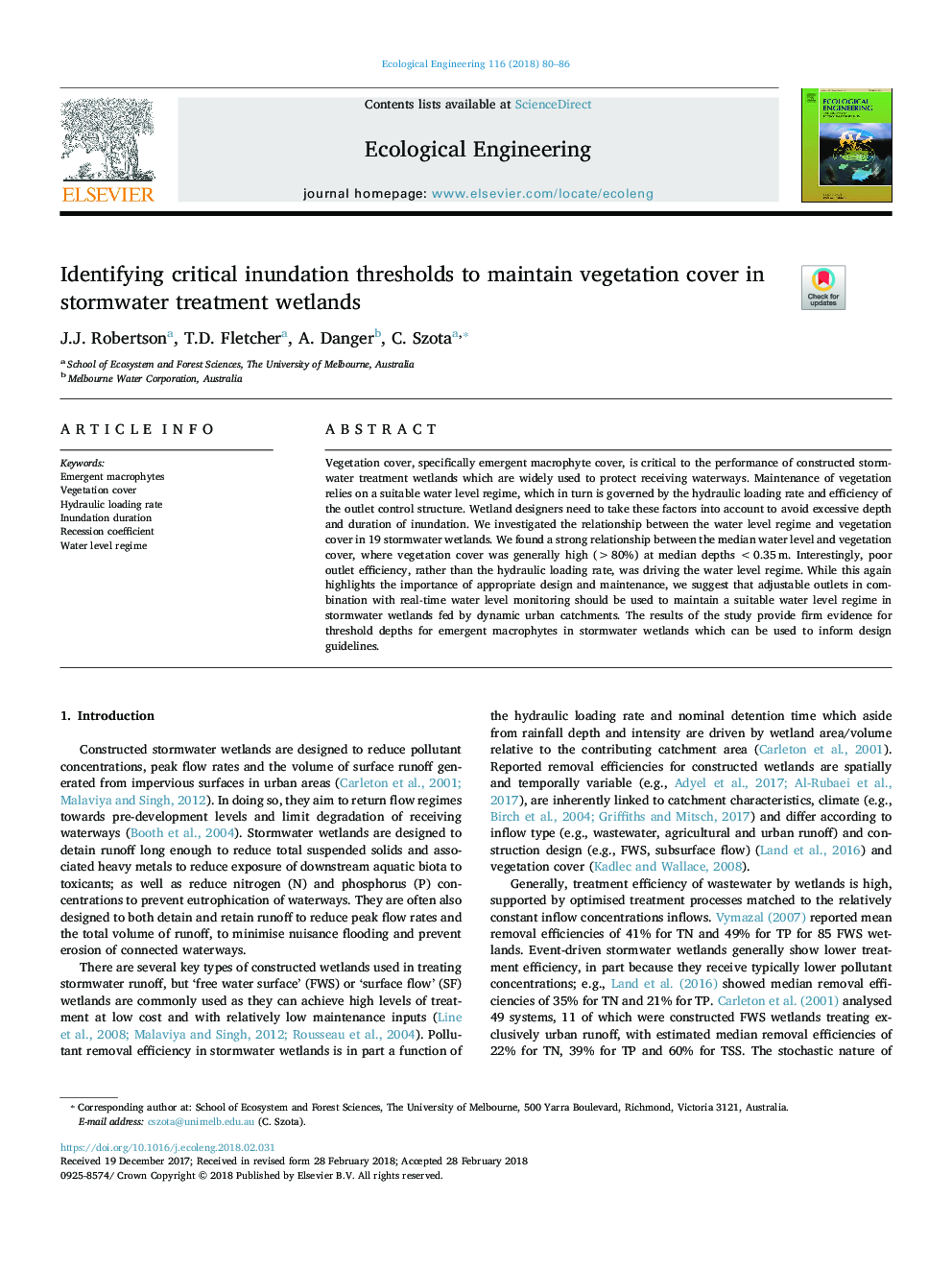| Article ID | Journal | Published Year | Pages | File Type |
|---|---|---|---|---|
| 8847911 | Ecological Engineering | 2018 | 7 Pages |
Abstract
Vegetation cover, specifically emergent macrophyte cover, is critical to the performance of constructed stormwater treatment wetlands which are widely used to protect receiving waterways. Maintenance of vegetation relies on a suitable water level regime, which in turn is governed by the hydraulic loading rate and efficiency of the outlet control structure. Wetland designers need to take these factors into account to avoid excessive depth and duration of inundation. We investigated the relationship between the water level regime and vegetation cover in 19 stormwater wetlands. We found a strong relationship between the median water level and vegetation cover, where vegetation cover was generally high (>80%) at median depthsâ¯<0.35â¯m. Interestingly, poor outlet efficiency, rather than the hydraulic loading rate, was driving the water level regime. While this again highlights the importance of appropriate design and maintenance, we suggest that adjustable outlets in combination with real-time water level monitoring should be used to maintain a suitable water level regime in stormwater wetlands fed by dynamic urban catchments. The results of the study provide firm evidence for threshold depths for emergent macrophytes in stormwater wetlands which can be used to inform design guidelines.
Related Topics
Life Sciences
Agricultural and Biological Sciences
Ecology, Evolution, Behavior and Systematics
Authors
J.J. Robertson, T.D. Fletcher, A. Danger, C. Szota,
